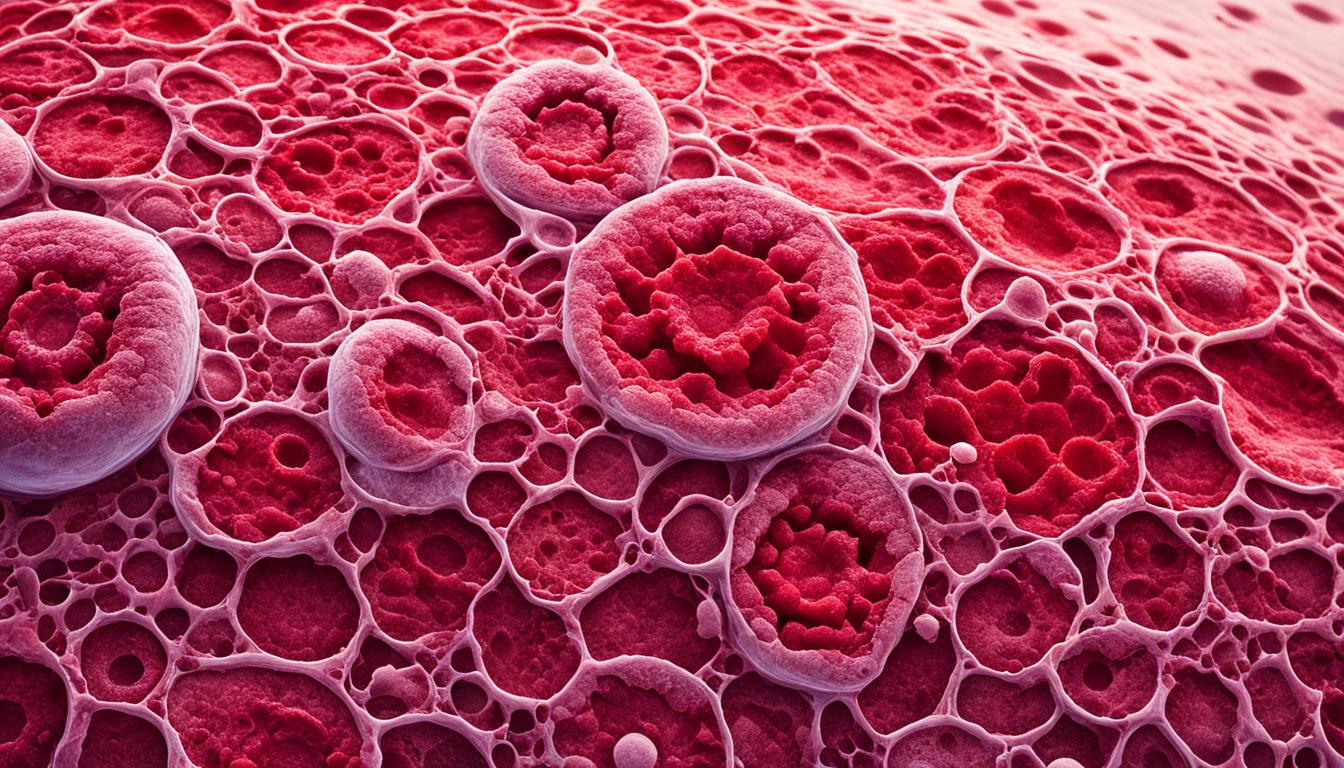Pyoderma gangrenosum (PG) is a rare skin disease. It causes various symptoms like pustules, abscesses, and ulcers. The condition involves the immune system up too much. This leads to the skin’s inflammation.
Surgical wounds or skin injuries can make PG more likely. It’s not common in those with weakened immune systems. However, it can occur after a special kind of cancer treatment.
The main treatment is to lower the immune response. This helps stop the skin from breaking down. Also, some newer medicines can be very helpful.
In a few cases, doctors have used stem cells to treat PG. This method has sometimes led to better healing. Yet, PG can still be hard to control. Doctors might not be able to say for sure how someone’s PG will turn out.
Key Takeaways:
- Pyoderma gangrenosum is a rare inflammatory neutrophilic dermatosis.
- Surgical trauma and pathergy are risk factors for developing the condition.
- The treatment for PG involves long-term immunosuppression.
- Newer therapies, such as anti-tumor necrosis factor alpha agents, have shown promising results.
- Stem cell therapy, specifically autologous stem cell transplantation, has been used in some cases and has shown improvement in PG lesions.
Clinical Presentation and Diagnosis of Pyoderma Gangrenosum
Pyoderma gangrenosum (PG) is a rare skin problem. It shows up as painful ulcers with purple edges. The ulcers can get bigger quickly and are deep. They are most often found on the legs but can be anywhere on the skin or mucous membranes.
PG has several forms, like ulcerative, pustular, bullous, and vegetative PG. Knowing how each form looks can help doctors diagnose and treat the problem better.
Diagnosing PG needs looking at the patient’s history, how they look, and a thorough exam. Doctors also rule out other diseases that look similar. This includes infections, cancers, and some reactions to drugs.
A skin biopsy doesn’t give a clear answer but is important to exclude other diseases. Combining the biopsy with how the patient looks helps confirm PG.
Getting the right diagnosis early is key. It allows for the correct treatment. This helps patients get better and lessens the risk of serious problems from PG.
Types of Pyoderma Gangrenosum
- Ulcerative PG: This type has deep, painful ulcers with purple edges.
- Pustular PG: It shows up as pus-filled bumps or pustules on the skin.
- Bullous PG: It looks like big, fluid-filled blisters.
- Vegetative PG: This type has growing, vegetative bumps. They are usually in areas where the skin touches, like armpits.
Treatment Options and Prognosis of Pyoderma Gangrenosum
The treatment of pyoderma gangrenosum is tricky since there aren’t clear rules yet. Doctors often start with systemic corticosteroids like prednisolone. They also use immunosuppressive drugs, for example, cyclosporine. In tougher cases, a mix of corticosteroids and drugs that kill cells can help.
Doctors may try different approaches too. This can involve sulfa drugs, drugs that suppress the immune system, or creams. Hyperbaric oxygen and newer biologic drugs, like anti-tumor necrosis factor alpha therapy, are also used. Luckily, most times surgery is not needed because it could make the condition worse.
Unfortunately, we can’t predict how pyoderma gangrenosum will turn out for a person. Some might heal completely. Others might have the disease come back multiple times, with serious health issues. Pyoderma gangrenosum can lead to infections in the skin and even cause problems in the eyes or organs.

